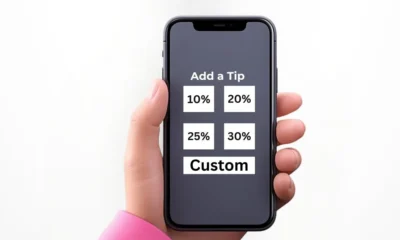GENERAL
The Butterfly Garden: A Dark Tale of Captivity, Survival, and Psychological Resilience

The Butterfly Garden is a chilling psychological thriller that addresses the tragic experiences of young women who were held captive in a secluded garden by a sadistic man referred to as the Gardener. The novel, therefore, blends horror, crime, and psychological drama to create a dark and unsettling plot. Its themes of trauma, survival, and control attract a reader’s dark fascination, being both disturbing and thought-provoking. The book’s unique storytelling, conveyed through the perspective of a survivor recounting her experiences to the FBI, keeps readers engaged, contributing to its popularity among fans of psychological thrillers.
About the Author: Dot Hutchison
Dot Hutchison is an American author known for her gripping psychological thrillers, particularly The Butterfly Garden, the first in The Collector series. She has also penned A Wounded Name, a retelling of Hamlet from Ophelia’s perspective. Hutchison’s works are characterized by their immersive quality, with frequent psychological undertones, trauma, and survival. Crime fiction, mythology, and gothic literature serve as some of the influences for her haunting storylines. An author skilled in developing complex characters and tight narratives, Hutchison has emerged as a powerful voice in the genre of psychological suspense.
Summary of The Butterfly Garden
The novel follows the story of the young girl, Maya, who is rescued from her captivity to recount her ordeal to FBI agents. She was one of the girls held in a prison of captivity in a secret garden where they are tattooed like butterflies and forced to survive under the obsessions of the twisted Gardener. The isolated mansion is lush yet ominous in its portrayal of this psychological horror. Through Maya’s narration, readers experience the darkness of the Gardener’s world, his sons’ involvement, and the psychological toll on the victims. The gripping storytelling keeps readers questioning Maya’s reliability while uncovering the terrifying details of her captivity.
Major Characters and Their Roles
Maya, also known as Inara, is a survivor who tells her story through her guarded personality and sharp intellect. The Gardener is a disturbed man who kidnaps and tattoos young women, holding them in his garden. His two sons, Desmond and Avery, play different roles; Desmond resents his father’s actions, while Avery is a sadist. FBI agents Victor Hanoverian and Brandon Eddison become Maya’s interrogators, revealing her story. There are other victims, whom the Butterflies acknowledge, each with individually tragic stories that underscore various responses to trauma and survival. Their relationships in this novel drive its emotional and psychological depth.
Themes and Symbolism
The novel explores power and captivity through the Gardener’s control over the Butterflies, highlighting both psychological and physical oppression. Survival and resilience shine through Maya’s actions and the ways the girls support one another. Psychological manipulation is evident in the Gardener’s justifications of his crimes. Tattoos symbolize the loss of identity and enforced transformation, as each girl is marked permanently. Justice and revenge likewise assume a major role, leading to moral repercussions involving survivors and perpetrators in their aftermath. Such themes make the novel more than just a thriller.
Psychological Aspects in the Novel
Trauma and PTSD are at the center of the novel, as Maya and the other Butterflies exhibit signs of severe psychological trauma. Stockholm Syndrome subtly comes into play, where some victims begin to develop complex feelings for their captor. The psychological complexity of the character, Gardener himself, is quite evident, portrayed with a distorted beauty and a way of justifying his crimes, adding to the disturbing nature of the novel as he believes he preserves these girls as living art. The psychological depth of both the captor and victims alike makes this a haunting tale; readers are invited to deconstruct the implications of trauma, control, and survival strategies.

Reception and Critical Reviews
Upon its release, The Butterfly Garden received significant attention due to its unusual and disturbing premise. Many readers praised the great suspense, deep character development, and psychological intensity of the novel. However, several critics found the dark themes too disturbing, while others criticized Maya’s occasionally detached narration. The trauma and captivity depicted in the book sparked debates about its realism and impact. Despite some criticisms, it has remained highly popular as an excellent example of engaging narration and adept handling of psychological themes, establishing itself as the best in its genre: a thriller.
Comparisons with Other Psychological Thrillers
The Butterfly Garden resembles The Silence of the Lambs, Room, Flowers in the Attic, and others as it delves into captivity, psychological trauma, and more visibly explores the challenges of human resilience. It differs from The Silence of the Lambs in that Hutchison’s book focuses more on victim experiences. Room tells a similar survival story from a child’s perspective, while Flowers in the Attic presents disturbing captivity within a family dynamic. Each book examines control and trauma in different ways, making The Butterfly Garden a unique yet comparable psychological thriller.
Real-Life Cases Similar to The Butterfly Garden
A novel reality mirrors real-life cases, particularly those of Ariel Castro’s victims, Jaycee Dugard, and the Fritzl case. The women are held captive for years. This reflects what occurred regarding psychological manipulation, trauma, and survival in the novel. The media representation of such stories then influences public perception of captives. Mainly, the media offers dramatic and misunderstood accounts of such experiences. The Butterfly Garden provides a fictionalized yet chillingly accurate depiction of the long-term effects of captivity, shedding light on the resilience of survivors and the psychological depth of both victims and perpetrators.
Lessons and Takeaways from The Butterfly Garden
This novel establishes the lasting impacts of trauma and the necessity for psychological support for survivors. The book also raises awareness of how manipulation and control can influence victims’ behaviors and mental states. It illustrates, through Maya’s resilience, the power of the human spirit in confronting horror. Readers gain insight into how justice is not always straightforward and how survival itself is an act of defiance. The story reminds readers that what may seem like a work of fiction often has real-life counterparts, and it serves as a call for greater understanding and empathy for those who have endured similar experiences.
Conclusion
The Butterfly Garden is a haunting psychological thriller that lingers long after the last page has turned. Its themes of trauma, captivity, and survival make it an engrossing yet uncomfortable read. This gripping narrative structure, well-developed characters, and psychological depth all make the novel a standout thriller despite its dark themes, rendering it an important book to discuss for its content on trauma and resilience. For those who appreciate thought-provoking thrillers, The Butterfly Garden is a must-read, offering a disturbing yet fascinating dive into the darkest corners of human nature.
GENERAL
Ruderne: Denmark’s 14th-Century Goose Tower & Ancient Legacy

The term “Ruderne” refers to the remnants of historic sites in Denmark, most notably the Vordingborg Castle ruins. Located in Vordingborg municipality, these ruins hold immense cultural and historical significance. One of them is particularly well-known Goose Tower (“Gåsetårnet”) that characterized Denmark in the Middle Ages. Frozen in the 14th century, it is considered one of the oldest preserved buildings in the country with defensive facilities. Visiting grounds of Ruderne is a walk through the castle walls and moving through the castle’s courtyards which gives it a rich historical element that makes Ruderne one of the places that history lovers and anyone who is interested in Denmark’s rich medieval history would not want to miss when they visit Denmark.
Historical Background of Vordingborg Castle
Vordingborg Castle was established more than 800 years ago in the 12th century by king Valdemar the Great. Its favorable location on the southern coast of Denmark meant that during the middle ages it was heavily used as a fort. The castle received its greatest extention during the reign of King Valdemar IV (Atterdag) in the 14th century to become one of the strongest castles of Scandinavia. It fulfilled its political and military functions and determined the destiny of the region. However, the castle fell into decline throughout centuries because of shifts in political power and wars and now it is famous for ruins. The site now offers a chance to look at the country’s medieval history with the help of the fragments remained.
The Iconic Goose Tower (“Gåsetårnet”)
- Historical Significance: Gåsetårnet is one of Denmark’s oldest and most picturesque remains of medieval defensive structures, which historians now believe where first constructed in the 14th century.
- Symbol of Royal PowerThe figure of the golden goose located at the top of the tower can objectively be considered as the main symbol of the castle’s main purpose in the Middle Ages – the consolidation of the royal power near which the structure is built
- Architectural Design: Deep and all round surrounding the plaza is a cylindrical brick structure with a thickness capable of withstanding attacks and hosting a commanding position.
- Cultural Landmark..: Vordingborg Castle was attacked and partially destroyed during the witch hunt in 1518, and eventually demolished apart from the Goose Tower; currently, the Goose Tower is a symbol of the medieval Denmark and its ability to preserve the building.
Ruderne’s Role in Danish History
During its prime, Vordingborg Castle was a political and military epicenter in Denmark. It served as a base for numerous conflicts, including those against the Hanseatic League. It was acting as a great fortification point against any invaders since its physical position was strategic. Gradually it was associated with the kingship and the monarch’s authority and control. That is why such monuments as treaties and battles associated with it are essential in the chronicle of Denmark’s historical past. Today, Ruderne is not only a symbol of medieval Denmark but also a living testimony of a culture that has been finished The Danes are still proud of it and the tourists are interested in it. It still stands and is an example of the historical and medieval Danish architecture.

The Architecture of Ruderne
The structure of the castle clearly illustrates a great number of principles of medieval fortification design. Ever constructed with strong bricks and stones it had strong walls and a surrounding moat with towers at certain intervals. An example of such design is demonstrated by the Goose Tower at the site, which has a cylindrical shape with a strong foundation. Today, the outlines of the leading castle and its surroundings can be observed as well as fragments of the Shades castle tapestry Nonetheless, based on the remaining structures they preserve the medieval appearance of the castle and tell a lot about the historical period under consideration; therefore, people interested in the Middle Ages will have much to enjoy seeing in Vordingborg.
Exploring the Ruins Today
Visitors to Ruderne can explore the remains of the castle walls, courtyards, and other key structures. Guided tours also give historical background information being able to make walking in such remnants a memorable experience. Goose Tower is quite fascinating; members can watch stunning countryside outlooks from this amazing tower. Most of the signs and the interactive installations remain informational, and therefore easily understandable for all ages. It is a historical site but it is located in peaceful areas and therefore is ideal for history and nature enthusiasts. Ruderne is an example of the medieval architecture of Denmark where tourists will be able to learn alot about history as well as enjoy exploring nature.
Archaeological Discoveries at Ruderne
- Artifacts: Excavations have uncovered pottery, coins, weapons, and tools that provide insights into medieval daily life, trade, and craftsmanship.
- Castle Layout: Archaeologists have uncovered sections of the original castle’s layout, revealing the foundations of lost towers, walls, and structures.
- Cultural Insights: The discoveries help shed light on the social structure, cultural practices, and living conditions within the castle during its prime.
- Trade and Economy: Items like coins and trade goods suggest that Vordingborg Castle was a hub for regional and international commerce.
- Defensive Design: Findings of weaponry and fortifications further highlight the castle’s strategic military importance during medieval conflicts
Events and Activities at Ruderne
Ruderne hosts various events and activities that bring history to life. Annual medieval festivals include reenactments, showcasing battles and daily life from the Middle Ages. Educational workshops and guided tours offer insights into Denmark’s history and archaeology. The site is also a venue for cultural events, such as concerts and art exhibitions, set against the stunning backdrop of the ruins. These events make Ruderne an engaging destination for visitors of all ages, blending education with entertainment while celebrating the heritage of Vordingborg Castle. Visitors can enjoy hands-on learning while experiencing the medieval atmosphere.
Conclusion
Ruderne stands as a remarkable window into Denmark’s medieval past, offering a unique blend of history, culture, and scenic beauty. From the iconic Goose Tower to the tranquil ruins of Vordingborg Castle, the site provides a rich and immersive experience. Whether you’re a history enthusiast, a cultural explorer, or simply a traveler seeking stunning views, Ruderne is a destination that captures the essence of Denmark’s heritage. Exploring its ruins connects visitors to the stories and lives of the past, making it a must-visit location for anyone eager to uncover the treasures of Danish history and culture.
GENERAL
Photeeq: Unlock Pro-Level Photo Editing & Creativity with Ease!

Photeeq: Unlock Pro-Level Photo Editing & Creativity with Ease!
Photography is more than just capturing moments; it’s about storytelling, emotions, and creativity. Enter Photeeq—a platform built for photography and videography enthusiasts. Whether you’re a beginner or a seasoned pro, it helps sharpen your skills. It’s not just a tool; it’s a learning hub, a creative space, and a go-to resource. Struggling with color grading? Need editing tips? Photeeq has you covered. The world of photography is evolving quickly, and you must keep up. It ensures that you do. No fluff, no complicated jargon—just pure, practical insights to elevate your craft. Photography isn’t just about the camera; it’s about how you use it. It helps you master that.
Why Photeeq Stands Out in the Photography World
Let’s be real. The internet is packed with photography platforms. But Photeeq? It’s different. Why? Because it’s not just about flashy filters and presets. It’s about real skills.It doesn’t just throw tools at you—it teaches you how to use them. There’s depth. Expertise. A community that helps you grow. Unlike generic editing apps,it is built for those who crave mastery. You want crisp edits? Perfect color balance?It gives you that and more. It blends education with creativity, making it a one-stop shop for photographers and videographers. No more endless Google searches. Photeeq simplifies it all. One place, all answers. That’s what makes it stand out.
Photeeq’s Photo-Editing Plugin: A Game Changer
Editing can be frustrating. Messy layers, confusing settings, endless tweaks. Enter Photeeq’s plugin. A game-changer for those who use Adobe Lightroom and Photoshop. No more guessing. No more trial and error. This plugin streamlines advanced editing, making it faster and smoother. Want precise color grading? Done. Need non-destructive edits? Photeeq has it covered. The best part? It doesn’t overwhelm you with complexity. It’s smart, intuitive, and packed with pro-level features. You get expert results without the headache. Photographers swear by it. Videographers love it.Its plugin turns good edits into great ones. Once you try it, there’s no going back.
Mastering Color Grading with Photeeq
Color grading can be make or break for a photo. Too muted? Dull. Too saturated? Too much. Photeeq enables you to achieve the ideal balance. Washed-out tones are a thing of the past, nor are there ridiculous hues. With great precision, it brings out colors without sacrificing natural details. Think of this—you take a stunning sunset. But the colors? They lack the oomph they have in real life. That’s where Photeeq comes in. It reveals the richness, the depth, the drama. Whether you’re going for a cinematic look or a natural appearance, it gives you the control in your hands. Color grading is not an art by any means, but with it, you don’t just edit. You create.
Non-Destructive Editing: Why It Matters
Ever made an edit and regretted it later? Yeah, we’ve all been there. That’s why Photeeq focuses on non-destructive editing. You tweak. You experiment. And if it doesn’t work? You go back. No damage done. No starting over. It keeps your original file untouched while allowing endless changes. This is a game-changer for professionals. Why? Because creativity needs flexibility. You don’t want to be stuck with permanent mistakes. Photeeq ensures a seamless, stress-free workflow. Edit boldly. Adjust freely. Undo without worry. That’s the beauty of non-destructive editing. It’s not just about making changes. It’s about making smart changes.
Essential Photography Tutorials & Tips on Photeeq
You can have the best camera. The best lens. But if you don’t know how to use them? It’s pointless. Photeeq fixes that. It’s packed with easy-to-follow tutorials, covering everything from composition to lighting. Whether you’re new or experienced, it offers valuable insights. Want sharper portraits? Better low-light shots? It’s all there. The best part? The guides aren’t robotic. They’re real, practical, and written for actual photographers. No fluff. Just tips that work. Photeeq doesn’t just throw information at you. It makes sure you learn.
Videography Enhancements with Photeeq
Photos are great. But videos? They take storytelling to another level. Photeeq understands that. That’s why it isn’t just for photographers. Videographers benefit too. Color grading for cinematic quality? Check. Editing workflows for smooth transitions? Done. Photeeq helps turn amateur footage into professional-grade films. Ever watched a movie and wondered, “Why do the colors look so perfect?” That’s expert color grading at work. And now, you can do it too. It gives videographers the power to enhance visuals, making every frame look stunning.

Best Cameras & Gear Reviews on Photeeq
Tech moves fast. One minute a camera is the best, the next, it’s outdated. Photeeq keeps you ahead. Honest, in-depth reviews on the latest gear. Cameras, lenses, accessories—everything you need. No biased opinions. No paid promotions. Just real insights from experts who actually use the gear. Need a budget-friendly option? Or a high-end pro setup? Photeeq breaks it down for you. Photography is an investment. Make informed choices. With Photeeq, you never waste money on the wrong gear.
Community Engagement & Learning Hub
Photography isn’t a solo journey. It’s a community. And Photeeq brings people together. Share your work. Learn from others. Get feedback that actually helps. Whether it’s online discussions, photo challenges, or live Q&As, Photeeq keeps creativity flowing. Struggling with an edit? Someone’s got your back. Want inspiration? The community is full of ideas. It isn’t just a platform. It’s a space where photographers and videographers grow—together.
Photeeq vs. Other Editing Tools: A Comparison
Adobe Lightroom, Photoshop, Luminar—great tools, but they have gaps. It fills them. Unlike other editors, Photeeq focuses on usability. It’s powerful yet simple. No bloated menus. No confusing interfaces. Just smart features that make sense. While Lightroom is known for organization and Photoshop for advanced edits, It balances both. It’s the perfect blend of functionality and ease. If you’re tired of overly complex software, Photeeq is the answer.
Future of Photography & How Photeeq is Leading the Way
The future is digital. AI is changing everything—including photography. Photeeq is at the forefront, integrating smart tools that enhance, not replace, human creativity. Automated edits? AI-powered color correction? It’s all happening. But here’s the thing. Photography will always need a human touch. Photeeq ensures that technology serves photographers, not the other way around. The goal? Smarter workflows, faster edits, and limitless creativity. The future looks exciting. And It is leading the charge.
Conclusion: Why Photeeq is the Ultimate Creative Companion
Photography isn’t just about clicking a button. It’s about vision. Creativity. Skill. Photeeq understands that. It’s more than a tool—it’s an entire ecosystem designed to help photographers and videographers thrive. From expert editing tools to hands-on tutorials, it covers everything. Whether you’re a beginner or a pro, It helps you push boundaries. Elevate your skills. Transform your photos. The journey doesn’t stop here. It starts with Photeeq.
GENERAL
Aiyifan: Your Gateway to World-Class International Dramas

Aiyifan is a high-end international streaming platform that offers a curated library of premium dramas from Asia, Europe, and Latin America. Tailored for a global audience with refined tastes, it blends cinematic excellence with cultural diversity, creating an immersive viewing experience. From critically acclaimed K-dramas to gripping European thrillers, Aiyifan presents storytelling as an art form, accessible in stunning HD and 4K resolution.
Origin
Aiyifan was established with the vision of transforming the way international audiences consume international stories. Having started as a premium streaming service that specializes in commercial-free Asian dramas and movies, the company was founded by a group of visionary media experts enthusiastic about preserving and innovating culture. Combining the latest in digital infrastructure and professional content curation, Aiyifan soon established itself as a reliable source of East Asian entertainment. This advanced strategy and inclusiveness will lead it to its transformation into a renowned international streaming brand.
Aiyifan: Global Stories, Local Hearts
Aiyifan initiated its operations by providing a high-quality collection of Asian dramas, especially those of South Korea, Japan, China, and Taiwan. These plays soon became popular all over the world due to their emotional resonance, good plot, and depth of culture, and they soon reached an international fan following.
In an attempt to curb the increasing demand for international content, Aiyifan intensified international content consumption with dramas in Europe and Latin America. This was a part of its strategic expansion and Aiyifan became a global streaming platform.
Features
1. Diverse International Content Library
Aiyifan has a wide diverse collection of international dramas with works in Asia, Europe, and Latin America. Being represented through such genres as romance, thriller, historical, and family drama, the platform satisfies an audience with various settings and interests, cultural understanding, and narration across all streaming platforms in a single service with access to numerous genres available through an app.
2. High-Quality Streaming
Aiyifan provides high-quality viewing experience, as it supports HD and 4K streams ensuring high-quality images and excellent sound effects. It uses adaptive streaming technology to optimize the work of the device, depending on the internet speed. In combination with the offline viewing option, users can also watch their favorite foreign dramas without any interruption at a high level of quality from any place and at any time.
3. Offline Viewing
Aiyifan’s feature of viewing offline enables a user to download his or her favorite drama and watch the movie without being connected to the internet. It is ideal to travel or use during commute and in places with low internet connection, providing audiences around the world with flexibility and freedom.
4. High-Quality Multilingual Subtitles
Aiyifan provides high-quality multilingual subtitles, expertly translated to preserve cultural nuances and dialogue accuracy. This ensures an immersive and authentic viewing experience for international audiences, regardless of language barriers.
5. User-Friendly Interface
Aiyifan offers intuitive navigation, personalized recommendations, and multilingual support, ensuring a smooth and accessible experience for all users.
Technology That Enhances Experience
Aiyifan is a TV that combines high technology and classy design to give viewers a smooth and immersing television experience. It has a simple and intuitive interface, which makes it easy to navigate the interface through various genres, languages, and recommendations, which are based on preference. Its platform is fully compatible with the use of smartphones, tablets, desktops, and smart TVs, making it accessible on all scales.
International Partnerships and Content Expansion
Aiyifan has also made solid alliances with the main content creators and top studios in the regions of Asia, Europe, and Latin America. Thanks to these deals, the platform gains exclusive rights, advance releases, and jointly produced original series combining storytelling approaches of more cultures.
This also keeps the library’s content dynamic and diverse as it constantly increases its global reach. Strategic partnerships enable the platform to remain at the edge of the trend and provide its patrons with new culturally diverse dramas.
Why Aiyifan Leads in International Drama Streaming
| Feature | Aiyifan | Netflix | Viki (Rakuten) | Amazon Prime Video |
| Focus on International Dramas | ✅ Strong focus (Asia, Europe, Latin America) | ✅ Broad but not specialized | ✅ Specializes in Asian dramas | ✅ Available, but limited selection |
| Subtitle Quality | ✅ High-quality, culturally accurate | ✅ Standard, sometimes delayed | ✅ High-quality community subs | ✅ Basic, varies by region |
| Languages Supported | 🌐 Multiple subtitle languages | 🌐 Wide subtitle and dubbing options | 🌐 Multilingual subtitles | 🌐 Subtitles in major languages |
| HD & 4K Streaming | ✅ Yes, supports both | ✅ Yes | ✅ HD (4K limited) | ✅ Yes |
| Offline Viewing | ✅ Available | ✅ Available | ✅ Available | ✅ Available |
Future Outlook
Aiyifan seeks to establish a wider presence in the worldwide market by incorporating such innovative technologies as AI suggestions and immersive formats. Still capitalizing on the factors of cultural diversity, strategic partnerships, and improved user experience, the center will merge as a major factor in the determination of the future of international streamed dramas.
Conclusion
Aiyifan is a good instrument of global storytelling and is among the elements that cross culture with its dramatic international tales. It is a fully-fledged service, whose interface is simple in its use and quality is never compromised, changing the process of streaming. As it grows, Aiyifan continues to give the world value by making sure that various content of high quality is so readily available to all of us in all places and turns out to be an enjoyable experience
-

 BIOGRAPHY1 month ago
BIOGRAPHY1 month agoBehind the Scenes with Sandra Orlow: An Exclusive Interview
-

 HOME8 months ago
HOME8 months agoDiscovering Insights: A Deep Dive into the //vital-mag.net blog
-

 HOME10 months ago
HOME10 months agoSifangds in Action: Real-Life Applications and Success Stories
-

 BIOGRAPHY8 months ago
BIOGRAPHY8 months agoThe Woman Behind the Comedian: Meet Andrew Santino Wife




























